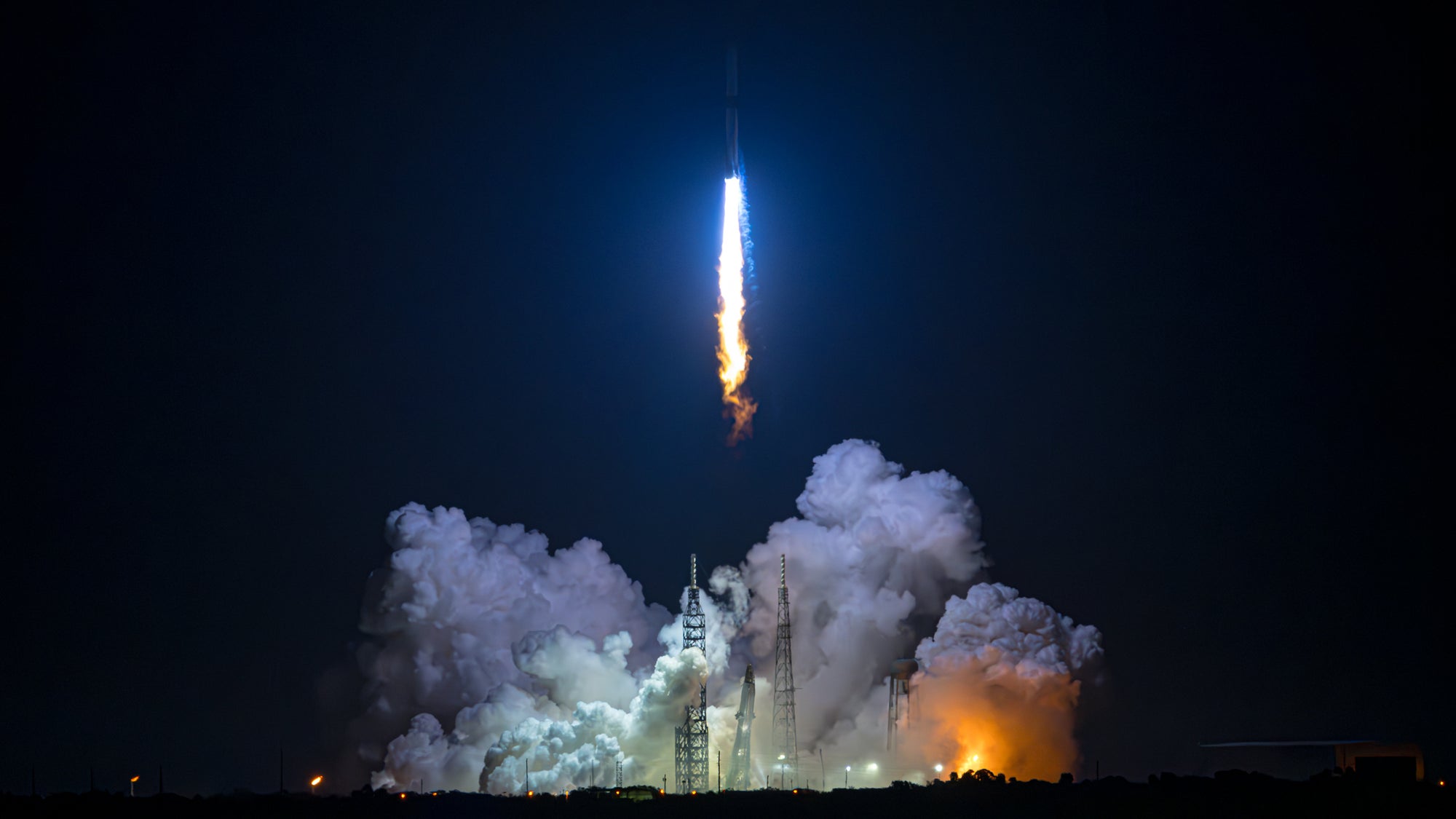After nearly a decade of anticipation, Blue Origin’s New Glenn—one of the largest rockets ever built—has made it to space.
During the twilight of Thursday morning, at Cape Canaveral Space Force Station in Florida, the 320-foot tall rocket’s seven BE-4 engines ignited liquid oxygen and liquid methane propellant to generate a combined 3.8 million pounds-force of thrust, sending it off in a ball of flames.
Elated screams from Blue Origin personnel could be heard during the live webcast of the spacecraft’s debut launch. It would achieve its primary objective just a few minutes later.
“I’m incredibly proud New Glenn achieved orbit on its first attempt,” said Dave Limp, CEO of Blue Origin, in a mission update Thursday morning.
The mission, NG-1, was a long time coming for Blue Origin.
Founder and owner Jeff Bezos made waves in 2021 when he, Star Trek icon William Shatner, and other customers flew to space on the company’s New Shepard rocket. But New Shepard is a fraction of the size of New Glenn and lacks the juice to fly beyond suborbit, limiting the company’s ambitions to space tourism flights.
The company publicly unveiled the name and design of New Glenn back in 2016, setting the goal of reaching space by 2020. But that timeline proved overly ambitious. In the meantime, SpaceX developed its own gargantuan rocket, Starship, which has flown six test flights and is scheduled for a seventh Thursday evening. It reached orbit on its third mission.
“Congratulations on reaching orbit on the first attempt!” SpaceX CEO Elon Musk said in a post on the social media platform he owns, X.
Bezos reciprocated the gesture by wishing Musk and SpaceX good luck on Starship’s seventh test flight.
SpaceX took an ambitious approach to Starship, aiming to launch as quickly as possible in order to gather data and refine its design. So far, it’s been successful, as evidenced by the company pulling off an unprecedented booster catch in October. Blue Origin, by contrast, has gone slow and steady, placing more pressure on the firm to get Thursday’s mission—a certification flight for the U.S. Space Force’s National Security Space Launch (NSSL) program—right.
Fortunately, it did, for the most part.
After lifting off from Cape Canaveral, New Glenn’s two stages separated, and the upper stage ignited a pair of smaller BE-3U engines to get it to orbit. As its speed approached 18,000 mph, the engines shut down, and Blue Origin confirmed it had reached its destination.
Once in orbit, the upper stage released the Blue Ring Pathfinder: a small prototype spacecraft designed to host and transport satellites between orbits, refuel visiting spacecraft, and perform computing and communications from space. According to Blue Origin, Blue Ring is “receiving data and performing well.”
A hiccup occurred, though, when New Glenn’s lower stage was lost during descent.
Like Starship’s Super Heavy booster, the lower stage is designed to be reusable. Blue Origin hoped to land it on a barge in the Atlantic Ocean called Jacklyn. But the company prior to the flight had tempered expectations for the booster landing—an extremely precise maneuver for a debut mission—instead emphasizing the goal of reaching space.
“We knew landing our booster, ‘So You’re Telling Me There’s a Chance,’ on the first try was an ambitious goal,” said Limp. “We’ll learn a lot from today and try again at our next launch this spring.”
That launch, which will carry NASA’s Escapade mission to study the Martian atmosphere, was delayed from October due to concerns about New Glenn’s readiness. But it will have to wait until the company completes a mishap investigation as required by the FAA, which told FLYING it considers the loss of the booster an anomaly.
SpaceX faced similar investigations following each of Starship’s first three flights, the longest stretching for seven months.
With New Shepard, Blue Origin was limited to occasional space tourism flights. But with its larger successor—which will require at least a few more test missions—the company could compete with SpaceX’s domination of Department of Defense and NASA launch contracts. New Glenn also has a few commercial customers, including Amazon’s Project Kuiper, which is also working with SpaceX.
Both launch providers aim to send uncrewed spacecraft to the moon as early as this year. A lunar lander version of Starship will soon land the crew of NASA’s Artemis III at the moon’s south pole, marking American astronauts’ first visit since the Apollo era. An uncrewed demonstration flight will be required first, but the mission is not scheduled until mid-2027, giving SpaceX plenty of time to prepare.
Blue Origin, meanwhile, aims to land its Blue Moon Mark 1 lander on the moon later this year, Limp said in an interview over the weekend. NASA expects Blue Moon to land the crew of Artemis V toward the end of the decade.
Like this story? We think you’ll also like the Future of FLYING newsletter sent every Thursday afternoon. Sign up now.
The post Blue Origin’s New Glenn Rocket Reaches Orbit on Debut Flight appeared first on FLYING Magazine.





